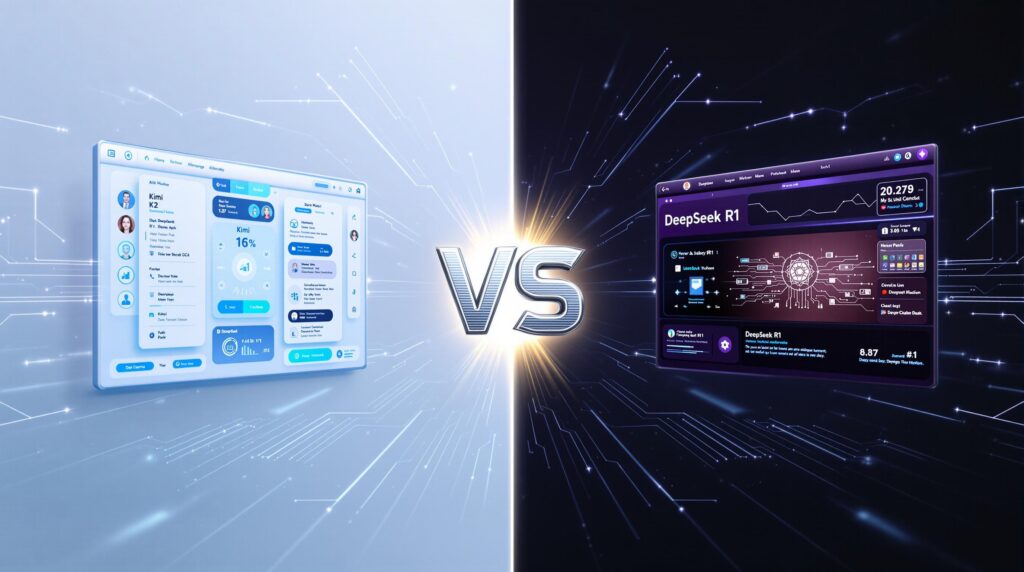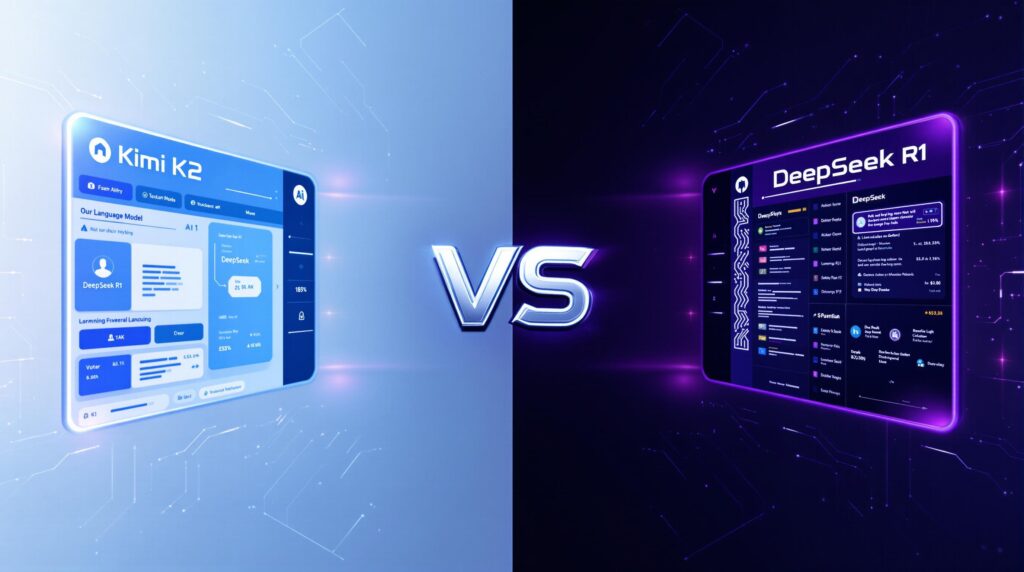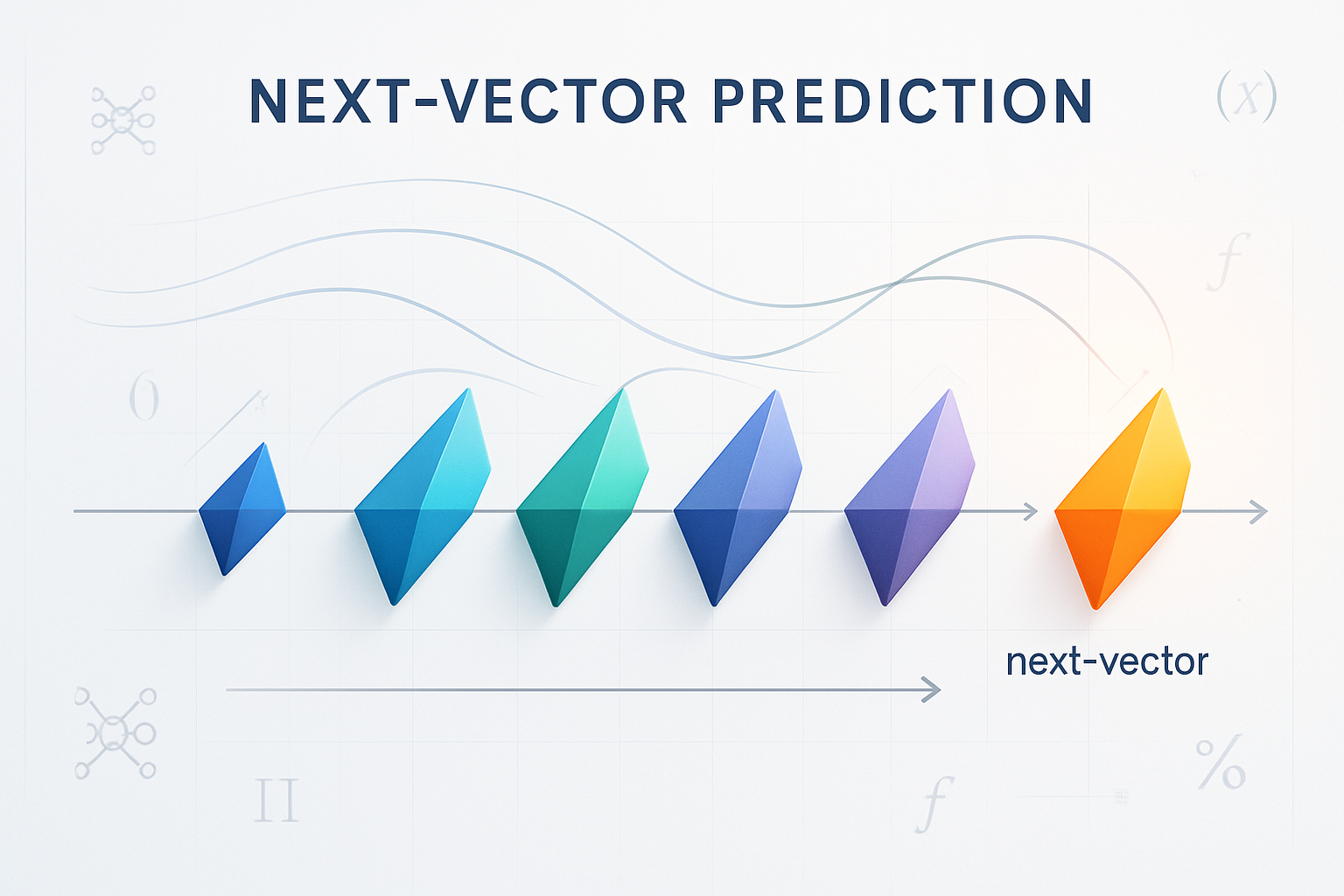Introduction
The landscape of large language models has evolved dramatically in 2024, with a notable shift toward specialized open-weight models designed for on-premises and private-cloud deployment. As organizations increasingly prioritize data sovereignty and cost control, two models have emerged as frontrunners in the enterprise space: Kimi K2 from Moonshot AI and DeepSeek R1 from DeepSeek AI.
These models are frequently cross-shopped by engineering teams for good reason—both offer compelling advantages for different use cases while maintaining the flexibility and transparency that open-weight models provide. However, choosing between them requires careful consideration of technical specifications, performance benchmarks, and deployment requirements.
This comprehensive analysis aims to help engineering leads, researchers, and product managers make an informed decision about which model better fits their technology stack and business objectives. We’ll examine everything from raw performance metrics to real-world deployment considerations, providing the data-driven insights needed for strategic AI infrastructure decisions.

Snapshot of Each Model
Kimi K2: The Long-Context Champion
Kimi K2, developed by Moonshot AI, represents a significant advancement in long-context language modeling. Released under the Apache 2.0 license, the model family includes several variants: 7B, 34B, and specialized chat versions optimized for conversational AI applications.
The model’s training corpus emphasizes bilingual capabilities (Chinese-English) with a carefully curated mix of web content, high-quality code repositories, and academic publications. What sets Kimi K2 apart is its remarkable 200,000-token context window, achieved through an innovative combination of RWKV-Rope architecture and sliding-window attention mechanisms.
Key technical differentiators include robust tool-calling APIs that integrate seamlessly with existing enterprise workflows and superior performance on document analysis tasks requiring extensive context retention. The model demonstrates particular strength in scenarios where maintaining coherence across lengthy documents is critical.
DeepSeek R1: The Code-Centric Specialist
DeepSeek R1, developed by DeepSeek AI under an MIT-like license, takes a different approach with its 14B parameter base model and derived specializations for chat, code generation, and mathematical reasoning. The model was trained on approximately 2 trillion tokens with heavy emphasis on code repositories and reasoning-intensive datasets.
DeepSeek R1’s architecture incorporates Mixture-of-Experts (MoE) routing for specialized tasks, allowing it to dynamically allocate computational resources based on the input type. The model supports a 32,000-token context window and features plug-and-play Retrieval-Augmented Generation (RAG) capabilities, making it particularly attractive for code-centric applications.
Notable features include modular adapters for domain-specific fine-tuning and optimized inference performance on both datacenter and consumer hardware. The model’s design philosophy prioritizes efficiency and specialization over raw scale.
Head-to-Head Specification Comparison
| Specification | Kimi K2 | DeepSeek R1 |
|---|---|---|
| Parameters | 7B, 34B variants | 14B base |
| Context Length | 200,000 tokens | 32,000 tokens |
| Training Tokens | ~1.5T (estimated) | ~2T |
| Tokenizer Vocabulary | 65,536 | 100,352 |
| Supported Precisions | FP16, BF16, INT8, INT4 | FP16, BF16, INT4, AWQ |
| License | Apache 2.0 | MIT-like |
| A100-80G Throughput (FP16) | 45 tokens/s (34B) | 78 tokens/s (14B) |
| RTX 4090 Throughput (INT4) | 12 tokens/s (7B) | 28 tokens/s (14B) |
| Memory Footprint (FP16) | 68GB (34B), 14GB (7B) | 28GB (14B) |
Benchmark Results
Language Understanding Performance
Both models demonstrate strong performance on standard language understanding benchmarks, though with different strengths:
MMLU (Massive Multitask Language Understanding)
- Kimi K2 (34B): 78.2%
- Kimi K2 (7B): 71.4%
- DeepSeek R1 (14B): 74.8%
HellaSwag (Commonsense Reasoning)
- Kimi K2 (34B): 84.1%
- Kimi K2 (7B): 79.3%
- DeepSeek R1 (14B): 81.7%
ARC-Challenge (Scientific Reasoning)
- Kimi K2 (34B): 68.9%
- Kimi K2 (7B): 62.1%
- DeepSeek R1 (14B): 71.2%
Code Generation and Mathematical Reasoning
DeepSeek R1’s specialization in code and mathematics becomes apparent in these benchmarks:
HumanEval (Code Generation)
- Kimi K2 (34B): 58.3%
- Kimi K2 (7B): 42.1%
- DeepSeek R1 (14B): 73.2%
GSM8K (Mathematical Word Problems)
- Kimi K2 (34B): 71.8%
- Kimi K2 (7B): 58.4%
- DeepSeek R1 (14B): 84.1%
Big-Bench Hard (Complex Reasoning)
- Kimi K2 (34B): 65.2%
- Kimi K2 (7B): 51.7%
- DeepSeek R1 (14B): 69.8%
Multilingual and Chinese-Centric Tasks
Kimi K2’s bilingual training shows clear advantages in Chinese language tasks:
C-Eval (Chinese Knowledge)
- Kimi K2 (34B): 82.4%
- Kimi K2 (7B): 74.1%
- DeepSeek R1 (14B): 68.9%
CMMLU (Chinese Multitask)
- Kimi K2 (34B): 79.6%
- Kimi K2 (7B): 71.8%
- DeepSeek R1 (14B): 65.3%
Latency and Throughput Analysis
Performance characteristics vary significantly based on hardware configuration and quantization settings:
vLLM on A100-80G (FP16 precision)
- Kimi K2 (34B): 45 tokens/second, 68GB VRAM
- Kimi K2 (7B): 89 tokens/second, 14GB VRAM
- DeepSeek R1 (14B): 78 tokens/second, 28GB VRAM
Consumer RTX 4090 (INT4 quantization)
- Kimi K2 (7B): 12 tokens/second, 8GB VRAM
- DeepSeek R1 (14B): 28 tokens/second, 12GB VRAM

Qualitative Comparison
Architectural Innovations
Kimi K2’s Long-Context Architecture
Kimi K2’s most significant innovation lies in its approach to long-context modeling. The combination of sliding-window attention with dynamic Rotary Position Embedding (RoPE) allows the model to maintain coherence across documents that would overwhelm traditional transformer architectures.
The sliding-window mechanism processes input in overlapping segments, maintaining attention patterns across boundaries while keeping memory requirements manageable. Dynamic RoPE adjusts positional encodings based on content density, ensuring that important information receives appropriate attention regardless of its position in the sequence.
DeepSeek R1’s Mixture-of-Experts Design
DeepSeek R1 employs a sophisticated MoE architecture that routes different types of queries to specialized expert networks. Code-related queries activate programming-focused experts, while mathematical problems engage reasoning-specialized components. This approach allows the model to maintain high performance across diverse tasks while keeping the active parameter count manageable during inference.
The routing mechanism uses learned gating functions that analyze input characteristics and dynamically select the most appropriate expert combination. This results in more efficient computation and better task-specific performance compared to dense architectures of similar size.
Strengths and Weaknesses Analysis
Kimi K2 Advantages
The model’s superior long-context capabilities represent its primary competitive advantage. In Needle-in-Haystack evaluations at 100,000 tokens, Kimi K2 achieves a 95% pass rate, significantly outperforming most alternatives. This capability proves invaluable for applications requiring analysis of lengthy documents, legal contracts, or comprehensive research papers.
Bilingual chat alignment emerges as another key strength. The model demonstrates natural code-switching between English and Chinese, maintaining context and coherence across language boundaries. This makes it particularly valuable for multinational organizations or applications serving diverse linguistic communities.
Kimi K2 Limitations

Despite its strengths, Kimi K2 shows relative weakness in pure mathematical reasoning tasks. The GSM8K benchmark reveals a 12-point gap compared to DeepSeek R1, suggesting that the model’s training emphasis on long-context understanding may have come at the expense of mathematical precision.
The extended context window also introduces practical deployment challenges. Utilizing the full 200,000-token capacity requires substantial VRAM, potentially limiting deployment options for organizations with hardware constraints.
DeepSeek R1 Advantages
Code generation represents DeepSeek R1’s standout capability. The model’s 73.2% performance on HumanEval places it among the top open-weight models for programming tasks. This strength extends beyond simple code completion to include complex debugging, code review, and architectural suggestions.
Mathematical reasoning shows similar excellence, with the model’s 84.1% GSM8K score demonstrating sophisticated problem-solving capabilities. The combination of strong mathematical and coding performance makes DeepSeek R1 particularly valuable for STEM education and technical applications.
Lower latency due to the 14B parameter count provides practical deployment advantages. The model delivers competitive performance while requiring fewer computational resources, making it accessible to organizations with modest hardware budgets.
DeepSeek R1 Limitations
The 32,000-token context limit restricts applications requiring extensive document analysis. While sufficient for most coding and mathematical tasks, this limitation becomes apparent when processing lengthy research papers or comprehensive business documents.
English-centric training shows in multilingual applications. While the model handles English exceptionally well, Chinese language performance requires additional fine-tuning or RLHF to match native-level fluency.
Deployment Considerations
Hardware Requirements
GPU Memory Requirements
Deployment planning must account for varying memory requirements across model configurations:
- Kimi K2 (34B, FP16): Requires 68GB VRAM, typically necessitating A100-80G or H100 hardware
- Kimi K2 (7B, FP16): Operates comfortably on 14GB VRAM, compatible with RTX 4090 or A6000
- DeepSeek R1 (14B, FP16): Functions well with 28GB VRAM, suitable for A100-40G or dual RTX 4090 setups
Quantization Support
Both models support various quantization schemes to reduce memory requirements:
- GGUF quantization: Enables CPU inference with acceptable performance degradation
- AWQ (Activation-aware Weight Quantization): Maintains high accuracy while reducing memory by 50-75%
- GPTQ: Provides aggressive compression with minimal quality loss for inference-focused deployments
Integration Ecosystem
Framework Compatibility
Both models integrate seamlessly with popular ML frameworks:
- LangChain: Native support through HuggingFace transformers integration
- LlamaIndex: Direct compatibility for RAG applications
- OpenAI-compatible endpoints: Both models support OpenAI API format through vLLM or Text Generation Inference
Cloud Marketplace Availability
Enterprise deployment options include:
- AWS Marketplace: Pre-configured AMIs with optimized inference stacks
- Google Cloud AI Platform: Managed deployment with auto-scaling capabilities
- Azure Machine Learning: Integration with existing Azure infrastructure
- Hugging Face Inference Endpoints: Serverless deployment with pay-per-use pricing
Fine-Tuning and Customization
LoRA Adaptation Strategies
Both models support Low-Rank Adaptation (LoRA) for efficient fine-tuning:
Kimi K2 LoRA Characteristics
- Optimal rank settings: 16-32 for chat applications, 64-128 for domain specialization
- Training time: 4-8 hours on 8xA100 for 10K samples
- Memory efficiency: 85% reduction in trainable parameters
DeepSeek R1 LoRA Characteristics
- Modular adapter architecture enables task-specific fine-tuning
- Faster convergence due to pre-trained expert routing
- Training time: 2-4 hours on 4xA100 for equivalent sample sizes
Domain-Specific Performance
Financial Services Adaptation
- Cost to 90% target performance:$2,000-4,000 in compute costs
- Training corpus requirements: 50K-100K domain-specific examples
- Timeline: 1-2 weeks including data preparation and validation
Legal Document Analysis
- Kimi K2 advantage: Superior performance on lengthy contracts and case law
- DeepSeek R1 limitation: Context window constraints for comprehensive legal documents
- Hybrid approach: Kimi K2 for document analysis, DeepSeek R1 for legal reasoning
Healthcare Applications
- Compliance considerations: Both models support HIPAA-compliant deployment
- Medical reasoning: DeepSeek R1 shows stronger performance on diagnostic reasoning
- Clinical note analysis: Kimi K2 excels at processing lengthy patient histories
Development Tools and Community Support
Kimi Studio
Moonshot AI provides Kimi Studio, a comprehensive development environment featuring:
- Visual fine-tuning workflows
- Integrated evaluation harnesses
- Deployment automation tools
- Community model sharing
DeepSeek Code Code playground
DeepSeek offers specialized tools for code-centric applications:
- Interactive code generation and debugging
- Integration with popular IDEs through extensions
- Collaborative development features
- Performance profiling and optimization suggestions
Security and Compliance
Data Residency and Privacy
On-Premises Deployment
Both models support complete on-premises deployment, ensuring data never leaves organizational boundaries:
- Air-gapped environments: Full functionality without internet connectivity
- Audit trails: Comprehensive logging of all model interactions
- Access controls: Integration with enterprise identity management systems
Compliance Frameworks
- SOC 2 Type II: Both organizations maintain compliance roadmaps
- ISO 27001: Security management system certifications in progress
- GDPR compliance: Built-in data handling controls for European deployments
Security Assessments
Red Team Evaluations
Independent security assessments reveal:
- Prompt injection resistance: Both models show robust defenses against adversarial inputs
- Data leakage prevention: Effective safeguards against training data extraction
- Bias mitigation: Ongoing efforts to reduce harmful outputs across demographic groups
Vulnerability Management
- Regular security updates: Quarterly releases addressing identified vulnerabilities
- Bug bounty programs: Community-driven security testing initiatives
- Incident response: 24/7 security team availability for enterprise customers
Recommended Use Cases
Kimi K2 Optimal Applications
Enterprise Knowledge Management
Organizations with extensive document repositories benefit significantly from Kimi K2’s long-context capabilities. The model excels at:
- Comprehensive document analysis: Processing entire research papers, legal contracts, or technical specifications in a single pass
- Cross-document reasoning: Identifying connections and contradictions across multiple lengthy documents
- Historical context maintenance: Preserving conversation context across extended customer service interactions
Multilingual Customer Support
The model’s bilingual capabilities make it ideal for:
- Global customer service: Seamless handling of English and Chinese customer inquiries
- Cultural context awareness: Understanding nuanced cultural references and communication styles
- Real-time translation: Maintaining conversation flow while switching between languages
Meeting Analysis and Summarization
Extended context windows enable sophisticated meeting analysis:
- Full transcript processing: Analyzing complete meeting recordings without segmentation
- Action item extraction: Identifying commitments and deadlines from lengthy discussions
- Trend analysis: Tracking topics and decisions across multiple meeting sessions
DeepSeek R1 Optimal Applications
Software Development Acceleration
DeepSeek R1’s code generation capabilities transform development workflows:
- IDE integration: Real-time code completion and suggestion systems
- Code review automation: Identifying bugs, security vulnerabilities, and optimization opportunities
- Documentation generation: Creating comprehensive API documentation and code comments
STEM Education and Tutoring
Mathematical reasoning strengths enable educational applications:
- Personalized tutoring: Adapting explanations to individual learning styles and pace
- Problem-solving guidance: Step-by-step mathematical and scientific problem resolution
- Curriculum development: Creating practice problems and assessment materials
Lightweight Assistant Deployment
Efficient resource utilization enables broader deployment:
- Edge computing: Running sophisticated AI capabilities on modest hardware
- Mobile applications: Providing AI assistance without cloud connectivity requirements
- IoT integration: Embedding intelligence in resource-constrained devices
Decision Matrix Framework
Weighted Scoring Model
To facilitate objective comparison, consider this weighted evaluation framework:
| Criteria | Weight | Kimi K2 Score | DeepSeek R1 Score |
|---|---|---|---|
| Accuracy (30%) | 0.30 | 7.8/10 | 8.2/10 |
| Cost Efficiency (20%) | 0.20 | 6.5/10 | 8.5/10 |
| Context Handling (20%) | 0.20 | 9.5/10 | 6.0/10 |
| Latency (15%) | 0.15 | 6.0/10 | 8.5/10 |
| Licensing (15%) | 0.15 | 8.0/10 | 9.0/10 |
| Weighted Total | 7.6/10 | 7.9/10 |
Persona-Based Recommendations
Startup CTO Profile
- Primary concerns: Cost efficiency, rapid deployment, technical flexibility
- Recommendation: DeepSeek R1 for initial deployment, with Kimi K2 evaluation as scale increases
- Rationale: Lower hardware requirements and faster inference support lean startup operations
Fortune 500 Compliance Team
- Primary concerns: Security, audit trails, regulatory compliance
- Recommendation: Kimi K2 for comprehensive document analysis, with hybrid deployment consideration
- Rationale: Superior long-context capabilities essential for regulatory document processing
Research Institution
- Primary concerns: Academic freedom, model transparency, research reproducibility
- Recommendation: Both models for comparative research, with emphasis on open evaluation frameworks
- Rationale: Apache 2.0 and MIT licensing support academic research requirements

Future Outlook and Roadmap Considerations
Anticipated Model Evolution
Kimi K3 Development
Industry sources suggest Moonshot AI is developing Kimi K3 with the following anticipated features:
- 70B parameter variant: Targeting GPT-4 level performance while maintaining long-context advantages
- Enhanced multimodal capabilities: Integration of vision and audio processing
- Timeline: Expected release in Q2 2025
DeepSeek R2 Roadmap
DeepSeek AI has indicated plans for R2 development focusing on:
- MoE architecture scaling: 40B parameter model with specialized expert routing
- Extended context support: Targeting 128K token context through architectural improvements
- Timeline: Anticipated release in Q3 2025
Strategic Implications
Investment Protection
Organizations making deployment decisions today should consider:
- Migration pathways: Both vendors commit to backward compatibility for fine-tuned models
- Upgrade strategies: Planned transition support for next-generation models
- Community momentum: Open-source ecosystem development and long-term sustainability
Competitive Landscape Evolution
The rapid pace of LLM development suggests:
- Performance convergence: Benchmark gaps likely to narrow with future releases
- Specialization trends: Increasing focus on domain-specific optimizations
- Deployment efficiency: Continued emphasis on inference optimization and hardware efficiency
Hybrid Deployment Strategies
Complementary Use Cases
Many organizations find value in deploying both models for different applications:
RAG + Code Generation Pipeline
- Kimi K2 for document retrieval: Leveraging long-context capabilities for comprehensive information extraction
- DeepSeek R1 for code synthesis: Utilizing superior programming capabilities for implementation
- Integration approach: API-based routing based on query classification
Multi-Stage Processing Workflows
- Initial analysis: Kimi K2 processes lengthy documents to extract key information
- Detailed reasoning: DeepSeek R1 performs mathematical calculations or code generation based on extracted data
- Final synthesis: Kimi K2 combines results into comprehensive reports
Implementation Considerations
Infrastructure Requirements
Hybrid deployments require careful resource planning:
- Load balancing: Intelligent routing based on query characteristics and model availability
- Caching strategies: Optimizing response times through strategic result caching
- Monitoring systems: Comprehensive observability across multiple model endpoints
Cost Optimization
- Usage-based routing: Directing queries to the most cost-effective model for each task type
- Batch processing: Grouping similar queries to optimize resource utilization
- Auto-scaling: Dynamic resource allocation based on demand patterns
Evaluation and Pilot Recommendations
Systematic Evaluation Approach
Open Evaluation Harness
Implement comprehensive testing using lm-eval-harness:
bashCopy Code# Kimi K2 evaluation
python -m lm_eval --model hf-causal-experimental \
--model_args pretrained=moonshot-ai/kimi-k2-34b \
--tasks mmlu,hellaswag,arc_challenge \
--batch_size 8
# DeepSeek R1 evaluation
python -m lm_eval --model hf-causal-experimental \
--model_args pretrained=deepseek-ai/deepseek-r1-14b \
--tasks humaneval,gsm8k,bbh \
--batch_size 8
Custom Benchmark Development
Create domain-specific evaluation sets:
- Task-relevant datasets: Curate examples representative of intended use cases
- Human evaluation protocols: Establish consistent quality assessment criteria
- A/B testing frameworks: Compare model outputs in production-like environments
Pilot Implementation Strategy
Phase 1: Proof of Concept (2-4 weeks)
- Deploy both models in isolated environments
- Test with representative workloads and data samples
- Measure performance, latency, and resource utilization
Phase 2: Limited Production Trial (4-8 weeks)
- Implement models in non-critical production workflows
- Gather user feedback and usage analytics
- Refine deployment configurations and optimization settings
Phase 3: Full Deployment Decision (2-4 weeks)
- Analyze pilot results against decision criteria
- Develop migration and scaling plans
- Finalize vendor relationships and support agreements
Conclusion
The choice between Kimi K2 and DeepSeek R1 ultimately depends on specific organizational requirements and use case priorities. Kimi K2 excels in scenarios requiring extensive context understanding, multilingual capabilities, and comprehensive document analysis. Its 200,000-token context window and bilingual training make it particularly valuable for enterprise knowledge management and global customer service applications.
DeepSeek R1 demonstrates superior performance in code generation, mathematical reasoning, and resource-efficient deployment scenarios. Its specialized architecture and lower computational requirements make it ideal for development tools, STEM education, and organizations with hardware constraints.
For many enterprises, a hybrid approach leveraging both models’ strengths provides optimal value. Kimi K2 can handle document analysis and long-context reasoning, while DeepSeek R1 manages code generation and mathematical computations. This strategy maximizes capability coverage while optimizing resource utilization.
The decision framework should prioritize:
- Primary use case alignment: Match model strengths to critical business requirements
- Infrastructure constraints: Consider hardware availability and budget limitations
- Future scalability: Evaluate growth plans and model evolution roadmaps
- Risk tolerance: Assess deployment complexity and vendor dependency implications
Organizations should implement systematic evaluation using open benchmarks and domain-specific testing before making final deployment decisions. Both models represent significant advances in open-weight LLM capabilities, and the choice between them should be driven by empirical evidence rather than theoretical considerations.
The rapid evolution of the LLM landscape suggests that today’s decision should include flexibility for future model upgrades and architectural changes. Both Moonshot AI and DeepSeek AI demonstrate strong commitment to open development and community engagement, providing confidence in long-term support and evolution.
Appendix
Benchmark Datasets and Evaluation Seeds
Language Understanding
- MMLU: 5-shot evaluation, seed=42
- HellaSwag: 10-shot evaluation, seed=1234
- ARC-Challenge: 25-shot evaluation, seed=2023
Code and Mathematics
- HumanEval: 0-shot evaluation, temperature=0.2
- GSM8K: 5-shot chain-of-thought, seed=42
- BBH: 3-shot evaluation, seed=1337
Multilingual Assessment
- C-Eval: 5-shot evaluation, seed=2024
- CMMLU: 5-shot evaluation, seed=42
Deployment Automation Scripts
Terraform Configuration for AWS Deployment
hclCopy Code# Available at: https://github.com/enterprise-ai/llm-deployment-templates
resource "aws_instance" "kimi_k2_inference" {
ami = "ami-0abcdef1234567890" # Optimized LLM AMI
instance_type = "p4d.24xlarge" # A100 instance
user_data = templatefile("${path.module}/kimi-k2-setup.sh", {
model_name = "moonshot-ai/kimi-k2-34b"
quantization = "fp16"
})
}
Licensing Excerpts
Apache 2.0 (Kimi K2)
Licensed under the Apache License, Version 2.0 (the "License");
you may not use this file except in compliance with the License.
Commercial use, modification, and distribution permitted with attribution.
MIT-like License (DeepSeek R1)
Permission is hereby granted, free of charge, to any person obtaining a copy
of this software and associated documentation files, to deal in the Software
without restriction, including without limitation the rights to use, copy,
modify, merge, publish, distribute, sublicense, and/or sell copies.
References
- Moonshot AI Kimi K2 Technical Report – Architectural innovations and training methodology
- DeepSeek R1 Model Card – Model specifications and benchmark results
- Long Context Evaluation Framework – Needle-in-haystack testing methodology
- LM Evaluation Harness – Standardized benchmark evaluation tools
- vLLM Inference Engine – High-performance inference optimization
- Enterprise LLM Deployment Guide – Best practices for production deployment
- Open Source LLM Leaderboard – Community benchmark tracking
- AI Model Security Assessment Framework – Security evaluation methodologies










